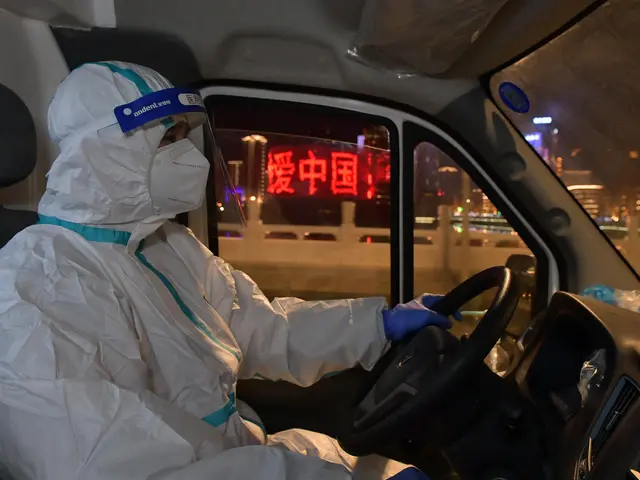Dressed head to toe in protective clothing, Shi Xuebin climbs aboard his vehicle to transport his special passengers -- confirmed or suspected patients with novel coronavirus disease (COVID-19).
As a seasoned ambulance driver of the Medical Emergency Center in north China's Tianjin Municipality, 46-year-old Shi volunteered to transfer patients by negative pressure ambulance, also known as a "mobile isolation ward" equipped with a negative pressure purification system, during the outbreak.
His first mission came on Jan. 25, the first day of the Chinese Lunar New Year, as he was asked to transfer an infected man in his thirties to Tianjin Haihe Hospital, the city's first designated hospital to accommodate coronavirus infected patients.
Shi wore a protective garment, an N95 respirator, a pair of medical goggles, two pairs of latex gloves and waterproof protective boots before his departure. While en route, doctors asked for basic information of the patient and measured his body temperature, heart rate and blood oxygen.
"The patient was really nervous about his condition as the COVID-19 cure rate was not clear at that time. Doctors just kept a proper distance, but not too much from him. And we tried our best to soothe him," Shi recalled.
The job was far more challenging than what he had expected. Soon, Shi's goggles started fogging up and his sight was blurred. "I had to concentrate even more on the road," he said.
After a transfer is completed, every corner of the ambulance must be fully disinfected in the designated area of the hospital to prevent cross-infection. The driver and doctors have to spray disinfectant all over each other's body.
"I couldn't help but shiver after the outdoors disinfectant shower. Tianjin's winter can be really cold," Shi said. Then he could finally take off the suit and dispose of it at the designated place.
The next step is taking a warm shower in the semi-contaminated zone. Shi had to take showers every time he returned from a transfer mission.
"I once transferred six patients in a single day. That meant six showers. My skin became somewhat chapped," he said.
Shi and his colleagues could hardly eat at regular hours and even had to stay highly alert for transfer calls at night after they joined the battle against the virus.
After 14 to 16 busy days, they can switch with another batch of ambulance doctors and drivers. They are required to have a 14-day quarantine in a designated hotel before they can go back to the battlefield again.
"It's a good chance to enjoy some downtime, exercise, watch TV, read books, and video chat with my family," Shi said.
As of Sunday, Tianjin had reported a total of 136 confirmed COVID-19 cases. Among them, 133 had been discharged from hospital after recovery, and three had died, according to the municipal health committee.
A total of 16 negative pressure ambulances based on 11 medical emergency stations have raced against the clock to transfer patients in Tianjin during the epidemic. Although the situation is improving, Shi, together with his colleagues, remains ready to leap into action whenever he is needed.
Sometimes, Shi's wife comes to the medical emergency station where he works and brings him some daily necessities. She puts the bag near the gate of the station. Shi will not take it until she steps back and maintains a certain distance. Unable to touch, they share an air hug.
"It has been challenging over the past months, but I will stay at my post until the end of the epidemic," Shi said.
(ASIA PACIFIC DAILY)
 简体中文
简体中文





